1911 Grips Information: The Power of a Perfectly Balanced Grip
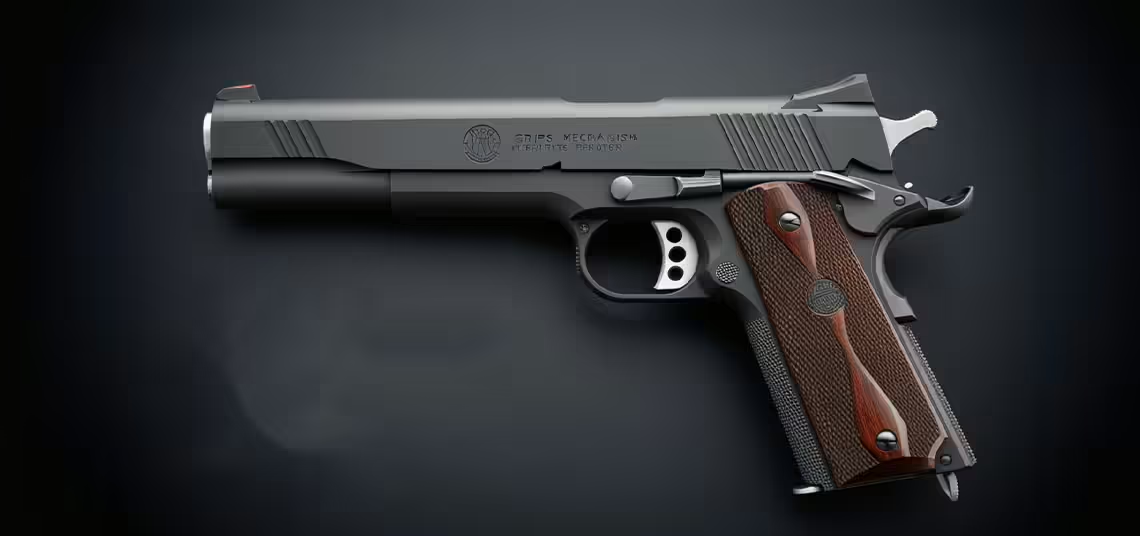
The 1911 model has been distinguished for its mechanical precision and durability since its inception. Notably, the grips mechanism is one of the most critical components affecting the overall performance of the 1911. This system provides users with high levels of control while ensuring efficient operation of vehicles and equipment.
What is 1911 Grips Information?
The 1911 grips mechanism is one of the most vital components of mechanical systems and plays a significant role in the design of this model. The grips system is used to control the movement of vehicles and machinery, regulate speed, and optimize performance. In the 1911 model, the grips directly contribute to the system’s operation, offering high performance to users. This grips mechanism accurately directs frictional force, providing stability and reliability in power transmission, while also enabling the user to maintain better control over the mechanism.
The system allows drivers or operators to adjust the movement of the system with precision. Specifically in the 1911 model, the grips mechanism focuses on optimizing power transmission while minimizing overheating and wear. Designed for longevity, this mechanism remains popular today as a durable and efficient system.
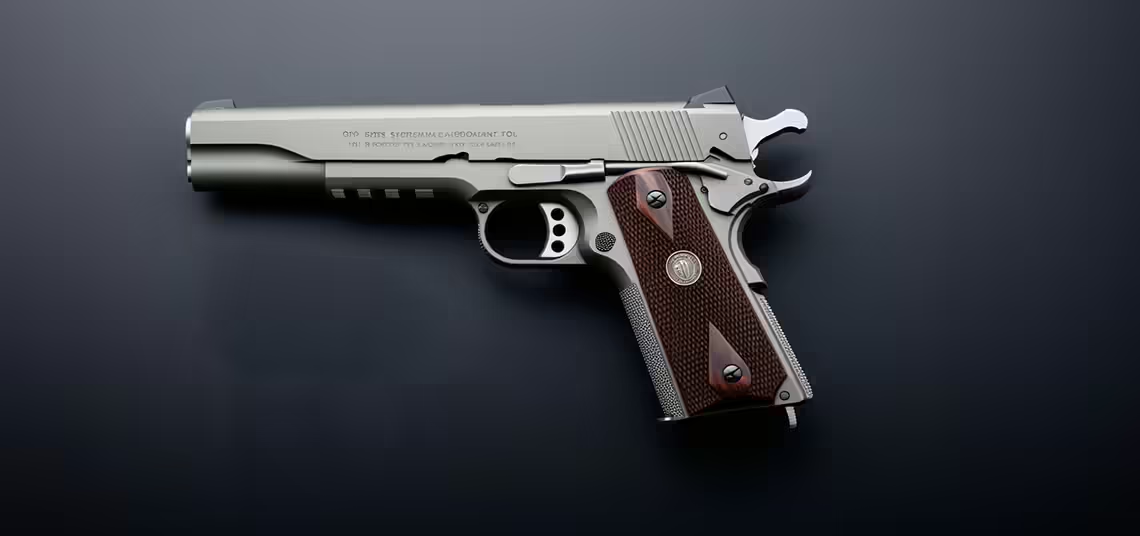
History of the Grips Mechanism
The grips mechanism has been utilized across various applications throughout technological development. Initially designed to facilitate power transmission in mechanical vehicles and machinery, grips systems gained more prominence as motorized vehicles and equipment evolved in the early 20th century. The grips system unique to the 1911 model is one of the innovative designs in this field. The materials and structures used at the time of its design enhanced the durability of the grips mechanism.
The evolution of grips systems has progressed in parallel with advancements in mechanical engineering. The grips technology used in the 1911 model, in particular, was developed to optimize power transmission. This system relies on the principle of friction to transfer power, increasing the efficiency of mechanical movements. Recognized as one of the most advanced technologies of its time, this grips mechanism has set a precedent for subsequent model developments.
The Role of the Grips System in the 1911 Model
The grips system in the 1911 model holds a crucial role in the overall functioning of the vehicle or machine. This mechanism ensures that engine power is effectively transferred to the wheels while also playing a key role in stopping the vehicle and adjusting speed. The grips mechanism enhances the driver’s or operator’s ability to control the vehicle, resulting in more efficient usage. Additionally, due to its durability and ability to handle frictional force, the system maintains performance even after prolonged use.
The 1911 grips system is meticulously designed to contribute seamlessly to the overall mechanics of the model. By managing the connection between the engine and wheels, the grips system minimizes energy loss and enhances energy efficiency, which leads to higher performance. Users benefit from stability even at high speeds, effectively managing the performance of their vehicles or equipment.
How Does the Grips System Work in the 1911 Model?
In the 1911 model, the grips system is one of the key components that influence the movement and performance of the vehicle or mechanical structure. This system ensures that engine power is efficiently transmitted to the wheels or other moving parts. The grips mechanism balances the engine’s revolutions and power to make the necessary adjustments according to the vehicle’s condition and driving situation. Proper operation of this system is crucial for healthy power transfer and controlled friction. In the 1911 model, the grips mechanism not only enhances the driver’s control but also prevents overheating and wear, ensuring a long-lasting lifespan.
The 1911 grips system operates on the principle of friction. Frictional force, a critical factor in power transmission, is effectively utilized between the grips plates to synchronize the engine’s revolutions and wheel speed. This ensures maximum performance with minimal power loss. The system prevents the engine from overloading while offering smooth transitions during speed changes, enhancing both overall performance and driving comfort.
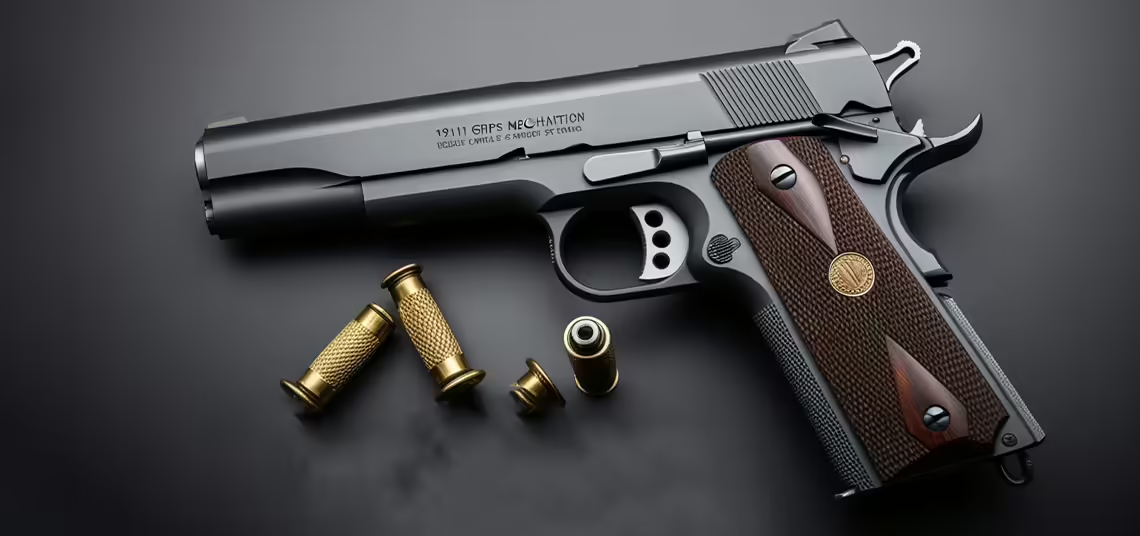
Introduction to the Grips Components
The grips system in the 1911 model is composed of several key components. These components work together harmoniously to ensure efficient operation of the system. The primary parts of the grips mechanism are:
- Grips Plates: The grips plates play a critical role in transmitting engine revolutions to the wheels. Typically made from high-friction materials, these plates resist wear and tear while transferring power effectively.
- Grips Disc: The grips disc serves as the crucial link between the engine and wheels. Positioned between the plates, it channels frictional force into engine power, contributing to the smooth operation of the system.
- Pressure Plate: The pressure plate regulates the pressure within the grips system. It compresses the grips disc during power transfer to ensure efficient power transmission, while also minimizing wear on the grips disc during driving.
- Grips Spring: The grips spring balances the system and optimizes friction between the plates. This spring maintains the engine’s revolutions under control, ensuring smooth power transmission.
Each of these components plays an integral role in the efficient functioning of the 1911 grips system. The system ensures stability in power transmission while minimizing overload and mechanical malfunctions.
Grips System Operation Process
The operation of the grips system in the 1911 model is based on the principle of friction. As engine revolutions increase, the grips system engages and begins transmitting engine power to the wheels. During this process, the grips plates absorb the engine’s power and facilitate the necessary movement in the wheels. The grips disc acts as a bridge between the engine and wheels, utilizing frictional force with maximum efficiency.
Initially, when the driver depresses the grips pedal, the system disengages, separating the grips plates and cutting off power transmission between the engine and wheels. As the driver releases the pedal, the plates reconnect, and engine power is transmitted back to the wheels. During this process, the grips spring adjusts the pressure between the plates to optimize frictional force. This system particularly ensures smooth transitions at low speeds and during stop-and-go maneuvers, preventing undue strain on the engine.
The 1911 grips mechanism also plays an active role during speed changes. By balancing the difference between the engine and wheel revolutions, the system maintains controlled power transmission even during sudden acceleration or deceleration, improving both safety and overall performance.
Advantages and Disadvantages of the 1911 Grips System
The 1911 grips system has long been recognized as a vital component of mechanical engineering. This system stands out for its efficiency and durability in power transmission, though it may encounter certain technical challenges. Designed for vehicles and machinery requiring high performance, the 1911 grips system offers significant advantages in terms of balance and control. However, like any mechanism, it also has some limitations and potential issues, which are explored in this section.
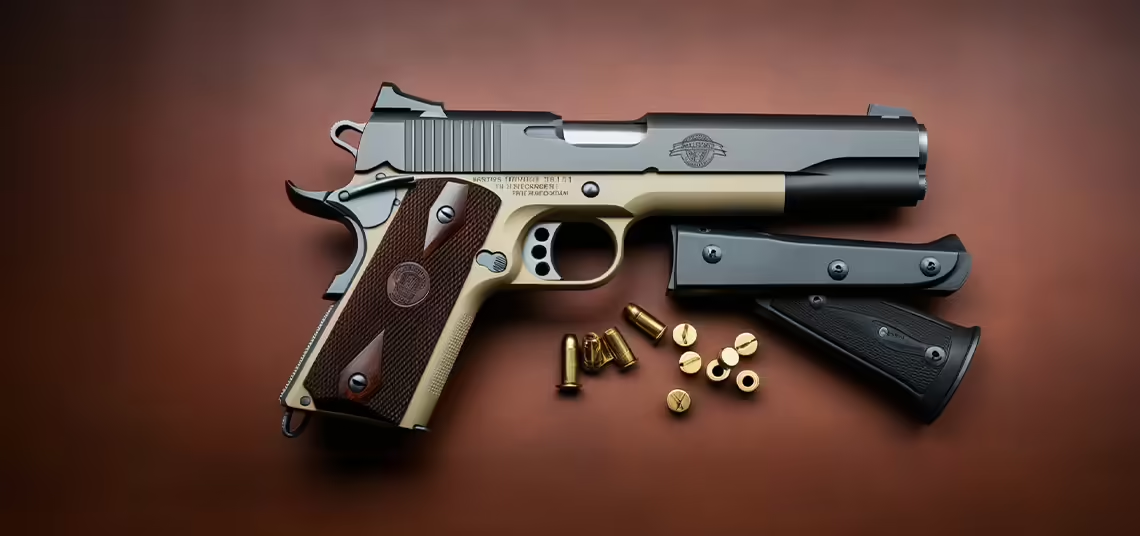
Performance Advantages of the 1911 Model
One of the most notable advantages of the 1911 grips system is its stability and efficiency in power transmission. This system effectively delivers the engine’s power to the wheels, ensuring high vehicle performance. The controlled management of frictional force allows the engine to operate without excessive strain. The 1911 grips system excels in high-torque applications, providing seamless power transfer that enables drivers to maintain full control even during rapid acceleration or deceleration.
Another significant advantage is the system’s durability. The 1911 grips mechanism is designed to withstand intensive use over a long period. The use of materials that resist friction and wear helps maintain the system’s performance over time, which is particularly crucial for industrial machinery and heavy-duty vehicles. The robust construction allows for extended use without the need for frequent maintenance.
Furthermore, the 1911 grips system provides drivers with high precision while driving. By successfully managing the synchronization between engine revolutions and wheel speed, the system allows for smooth speed transitions without disrupting the vehicle’s balance. This enhances both driving comfort and safety. The balance and sensitivity offered by this system, especially during sudden stops or quick starts, are among the features most appreciated by drivers.
Potential Issues and Solutions
While the 1911 grips system offers superior performance characteristics, it may occasionally encounter technical issues. Most of these problems arise from excessive use or improper maintenance. One of the most common issues is the wear of friction plates within the grips mechanism. Over time, the surface of these plates may degrade, reducing the efficiency of the grips. When the plates wear down, slippage may occur during power transfer, preventing the engine from operating efficiently. To resolve this issue, regular maintenance and replacement of worn plates are recommended.
Another common problem is stiffness or looseness in the grips pedal. If the pedal becomes stiff, the driver may struggle to effectively control the grips system, negatively impacting vehicle performance. Conversely, if the pedal is too loose, the grips system may not engage fully, resulting in incomplete power transfer. Regular inspection of the grips spring and appropriate adjustments or replacements can prevent this issue.
Overheating is also a frequently encountered problem in the grips system. Extended use or heavy loads can cause the grips system to overheat, particularly during high-torque power transmission. Overheating may impair the functionality of the grips and damage the engine. To prevent this issue, it is essential to cool the grips mechanism regularly and use suitable protective materials.
Lastly, a lack of harmony between components can result in performance loss. For optimal efficiency, the grips plates, pressure plate, and other components must operate in perfect alignment. Any misalignment can adversely affect the system’s overall performance. Regular inspection and timely replacement of components are necessary to prevent such issues.
1911 Grips Information and Maintenance Tips
The 1911 grips system plays a key role in effectively transmitting power within mechanical structures. However, to maintain its proper operation, regular maintenance and checks are crucial. Although the 1911 model grips mechanism is built to be durable, it may encounter wear and deformation over time. Therefore, performing maintenance procedures is essential to preserve the system’s efficiency and extend its lifespan. Regular maintenance of the 1911 grips system not only prevents performance losses but also avoids costly long-term malfunctions.
The proper functioning of the grips system requires that each component works harmoniously without any issues. This can only be achieved through regular maintenance and inspections. The most important aspects to focus on during maintenance include checking for wear on the grips plates, monitoring lubrication levels, and ensuring the sensitivity of the grips pedal. Below, we detail maintenance tips and key points to consider for the 1911 grips system.
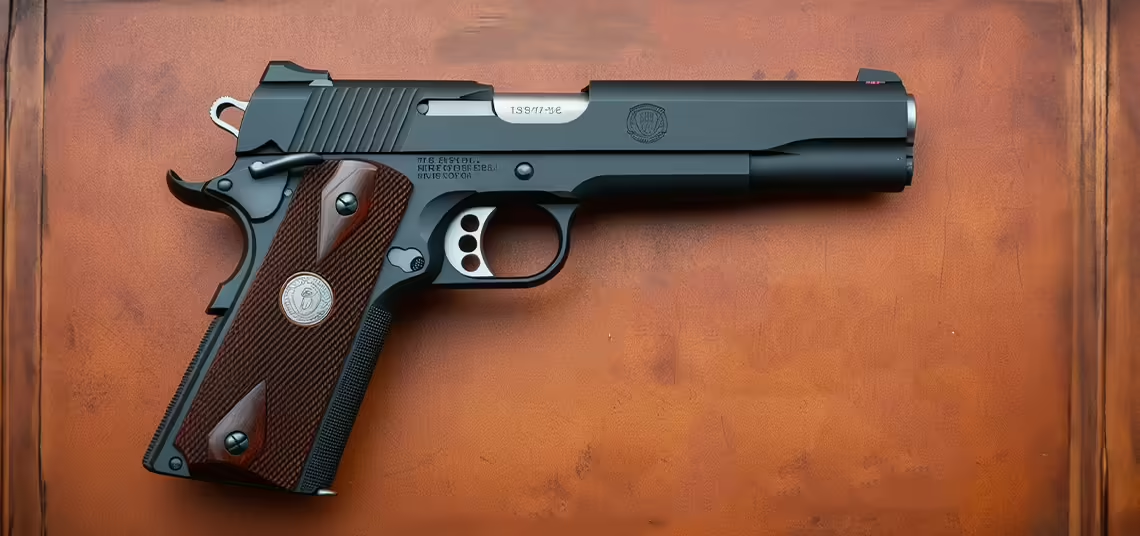
The Importance of Regular Maintenance
Regular maintenance is one of the most critical factors that directly affect the performance and lifespan of mechanical systems like the 1911 grips. To ensure the healthy operation of the grips system, it is necessary to prevent wear on components and maintain their correct functionality. A grips system that is not maintained regularly may experience issues in power transmission, negatively impacting the overall performance of the vehicle or mechanical structure.
One of the main benefits of regular maintenance is preventing overheating and wear in the grips system. In the 1911 model, frictional force is high during power transmission, which may lead to overheating with prolonged use. This overheating can cause faster wear on the plates and impair the functionality of the grips disc. A regularly inspected and maintained grips system avoids such issues and ensures smooth, long-term operation.
Regular maintenance also allows for the early detection and resolution of minor faults in the grips mechanism before they escalate into significant issues. If minor issues are not addressed in time, they can lead to larger malfunctions and increased repair costs. For instance, if worn grips plates are not replaced, other components such as the pressure plate and grips spring may also sustain damage, drastically reducing the overall performance of the grips system and eventually causing complete system failure.
One of the most crucial aspects to consider during grips system maintenance is lubrication. Some components of the grips system require proper lubrication to function smoothly. Particularly, appropriate lubrication is necessary between the grips discs and pressure plates to reduce friction. Incorrect or insufficient lubrication may expose components to excessive friction, causing accelerated wear.
How to Protect the Grips Mechanism
To protect the 1911 grips mechanism and ensure long-term use, it is vital to combine regular maintenance with proper usage. Maintaining the grips mechanism not only enhances vehicle performance but also minimizes wear on mechanical parts. How, then, can the 1911 grips mechanism be protected? Here are some key points to consider:
- Proper Use of the Grips Pedal: Correct usage of the grips pedal is the first step in protecting the grips system. Drivers should avoid applying sudden and unnecessary pressure to the pedal. Applying smooth transitions, especially during start-stop movements, helps prevent wear on the system. Additionally, holding the pedal down unnecessarily can cause the mechanism to overheat and lead to component deformation.
- Regular Inspection of Grips Plates: The grips plates are among the most crucial parts of the system. Over time, these plates may wear down and cause performance losses. Therefore, the condition of the plates should be checked regularly and replaced as necessary. Worn plates prevent efficient transfer of engine power to the wheels, negatively affecting the vehicle’s acceleration capabilities.
- Avoiding Excessive Loads: To protect the 1911 grips system, it is important to avoid applying a load that exceeds the system’s capacity. Excessive torque and power loads can strain the components of the grips mechanism, leading to faster wear. Particular attention should be paid to load balance, especially in heavy-duty vehicles or industrial machinery.
- Regular Lubrication: Lubrication processes are crucial for the proper operation of the grips system. The correct type and amount of lubricant help reduce frictional force, preventing wear and allowing components to function smoothly for longer periods. Lubricant levels should be checked regularly and replenished with appropriate oil as needed.
- Cooling the System: The grips mechanism may overheat during extended use. Therefore, cooling the system and allowing it to rest when necessary is important. Overheating can deform mechanical components and impair their functionality. Special attention should be given to cooling systems, and temperature levels should be regularly monitored, especially in machines operating with high torque.
By taking these precautions, the 1911 grips mechanism can operate effectively and without problems for an extended period, preventing potential costly malfunctions.
Frequently Asked Questions About 1911 Grips Mechanism
Due to its significant technical structure, the 1911 grips mechanism is frequently questioned by users and technical experts. Topics such as how this mechanism works, where it is used, and how to detect potential issues are among the most common queries. The 1911 grips system, which has a broad range of applications in various industries, is known for its durability and reliability. However, like any technical structure, it may show malfunctions if not maintained properly or after extended use. In this section, we will answer the most frequently asked questions about the 1911 grips system in detail.
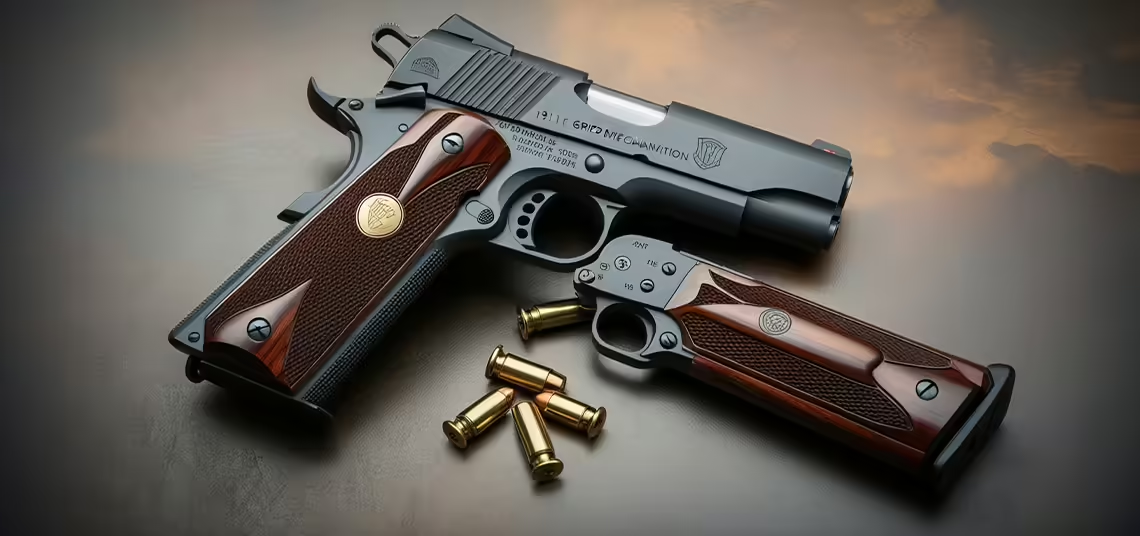
In Which Areas is the 1911 Model Used?
The 1911 grips mechanism has a wide range of applications. While it is primarily used in the automotive industry, it is also an effective system in various sectors, such as industrial machinery and heavy-duty equipment. The 1911 grips system is particularly preferred in applications requiring high power and torque due to its robust structure and reliable performance over extended use.
In the automotive industry, the 1911 grips mechanism is typically used in manual transmission vehicles. This system allows the driver to control the engine power and establishes a direct connection between the engine and wheels. Thus, the driver can precisely manage functions like acceleration, deceleration, and stopping.
In heavy industry, the 1911 grips system is used in large machines and industrial production lines. Grips systems play a crucial role, particularly in machines where high torque values and temperatures are present. These machines often operate in high-capacity factories or challenging work conditions like mining. The 1911 model grips system is designed to be suitable for such heavy machinery applications.
Additionally, the 1911 grips system is frequently used in other vehicles operating under harsh conditions, such as agricultural machinery and military vehicles. In these machines, the durability and longevity of the grips system are vital for operational processes. The main reason for preferring the 1911 model in these areas is its reliable performance, even during high torque and power transmission.
How to Detect Grips Issues
Issues with the 1911 grips mechanism typically manifest as performance losses and audible warnings. Since the grips system comprises several components, wear or malfunctions in any part can adversely affect the entire system’s operation. Early detection of grips issues is crucial for preventing significant malfunctions and avoiding costly repairs. How, then, can potential problems with the 1911 grips system be identified?
Slippage Issues: One of the most common problems in the grips mechanism is slipping. This usually occurs due to the wear of grips plates or damage to the grips discs. Drivers may notice this issue as a drop in the vehicle’s acceleration performance. The vehicle may over-rev during acceleration as the engine power is not fully transmitted to the wheels, negatively affecting performance.
Friction and Vibrations: Wear or misalignment in the grips mechanism can increase frictional force, causing noticeable vibrations while driving. Drivers may detect increased vibrations, especially during acceleration or deceleration. Such a situation indicates that the grips discs are not properly aligned or that the plates are worn.
Audible Warnings: Another common issue with the grips system is abnormal sounds. When a malfunction occurs in the grips mechanism, various metallic noises may be heard due to friction. Especially when the vehicle is starting or changing gears, loud noises indicate that the grips plates are worn or the pressure plates are damaged. Such sounds are a clear indication that the grips system requires maintenance or repair.
Differences in Pedal Response: Stiffening or excessive softness in the grips pedal indicates an issue with the grips system. A stiff grips pedal may suggest a problem with the pressure plate or grips spring. Additionally, if the pedal’s response time is delayed, it could signify an issue within the hydraulic system.
Detecting issues within the 1911 grips mechanism is vital for ensuring safe driving and protecting mechanical parts. Regular inspections and careful use can prevent such problems from arising. Early intervention upon detection of issues is an effective solution for avoiding more significant malfunctions.
The technical structure and operational processes of the 1911 grips mechanism contain vital information for both professional users and those working with these systems. When used correctly and maintained regularly, these mechanisms offer reliable and long-lasting performance. However, as with any mechanical system, wear and malfunctions are inevitable over time. Professional support and maintenance services are particularly crucial in such situations.
If you wish to learn more about 1911 grips systems or seek technical support, please visit zibgrips.com. Their team of experts and customer-focused approach provide the best solutions tailored to your needs. You can also reach out through their website for responses to your questions or to request detailed information.
Zibgrips’ wide range of products and technical services offer effective and reliable solutions for those looking to get the best performance from their grips mechanisms.
